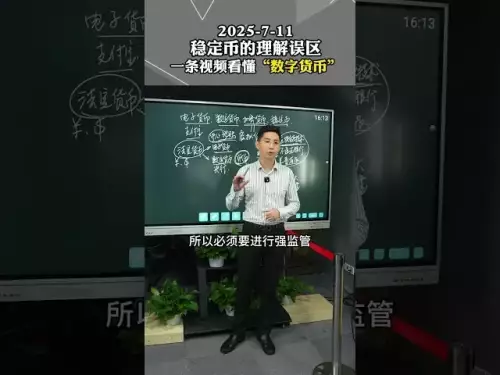-
 Bitcoin
Bitcoin $111200
0.38% -
 Ethereum
Ethereum $4311
0.07% -
 XRP
XRP $2.835
0.66% -
 Tether USDt
Tether USDt $1.000
0.01% -
 BNB
BNB $871.8
1.48% -
 Solana
Solana $203.7
0.33% -
 USDC
USDC $0.9998
0.00% -
 Dogecoin
Dogecoin $0.2181
1.15% -
 TRON
TRON $0.3277
-1.27% -
 Cardano
Cardano $0.8297
0.63% -
 Hyperliquid
Hyperliquid $47.23
0.97% -
 Chainlink
Chainlink $22.44
1.16% -
 Ethena USDe
Ethena USDe $1.001
0.03% -
 Sui
Sui $3.396
0.65% -
 Bitcoin Cash
Bitcoin Cash $602.4
-1.68% -
 Stellar
Stellar $0.3591
0.65% -
 Avalanche
Avalanche $24.72
2.04% -
 Hedera
Hedera $0.2207
1.81% -
 Cronos
Cronos $0.2643
-2.47% -
 UNUS SED LEO
UNUS SED LEO $9.508
-0.51% -
 Litecoin
Litecoin $113.8
1.95% -
 Toncoin
Toncoin $3.090
0.52% -
 Shiba Inu
Shiba Inu $0.00001239
0.76% -
 Polkadot
Polkadot $3.865
1.24% -
 Uniswap
Uniswap $9.409
1.13% -
 World Liberty Financial
World Liberty Financial $0.2393
28.62% -
 Dai
Dai $0.0000
0.01% -
 Ethena
Ethena $0.7362
-1.69% -
 Monero
Monero $270.5
-0.07% -
 Aave
Aave $302.9
0.38%
What does Layer1 mean in blockchain
Layer 1 in blockchain, the "base layer," hosts the core components of a blockchain, including consensus mechanisms, transaction processing, data storage, and cryptography, governing the fundamental operations and security of the network.
Nov 07, 2024 at 06:40 pm
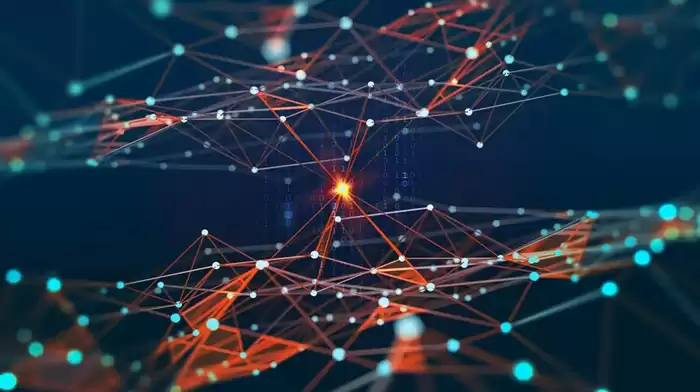
In the realm of blockchain technology, the concept of "layers" plays a crucial role in organizing and categorizing various components involved in the operation and functionality of a blockchain network. Among these layers, Layer 1 holds a fundamental position in the blockchain architecture. This article aims to provide an in-depth understanding of what Layer 1 entails.
Definition of Layer 1Layer 1, often referred to as the "base layer" or "blockchain protocol," serves as the foundation upon which a blockchain network is built. It encompasses the core components that govern the fundamental operations, rules, and consensus mechanisms of the network. These components include:
- Consensus Mechanisms: Layer 1 defines the consensus mechanism employed by the blockchain, such as Proof-of-Work (PoW) or Proof-of-Stake (PoS). The consensus mechanism is responsible for ensuring the validity and integrity of transactions on the network.
- Transaction Processing: Layer 1 handles the processing and validation of transactions within the blockchain. It ensures that transactions are valid, adhere to the network's rules, and are added to the immutable ledger.
- Data Storage: Layer 1 provides the storage mechanism for the blockchain's data, including transaction records, block headers, and state updates. This data is stored in a distributed manner across the network's nodes.
- Cryptography: Layer 1 utilizes cryptographic techniques to secure the blockchain and protect its data. This includes the use of encryption algorithms, digital signatures, and hashing functions.
Layer 1 blockchains possess several key characteristics:
- Decentralization: Layer 1 blockchains are decentralized, meaning they operate without a central authority or point of control. Instead, the network is governed by the collective participation of its participants.
- Transparency: All transactions and data stored on a Layer 1 blockchain are transparent and accessible to everyone on the network. This promotes accountability and helps maintain trust within the system.
- Security: Layer 1 blockchains prioritize security and immutability through their cryptographic mechanisms. Once data is stored on a Layer 1 blockchain, it is extremely difficult to alter or tamper with, enhancing the integrity of the network.
Some of the most well-known examples of Layer 1 blockchains include:
- Bitcoin (BTC)
- Ethereum (ETH)
- Solana (SOL)
- Cardano (ADA)
- Binance Smart Chain (BNB)
Layer 1 is the foundation upon which the blockchain ecosystem is built. It provides the core functionality, consensus mechanisms, transaction processing, data storage, and security measures that enable the operation and scalability of blockchain networks. Understanding the concept of Layer 1 is essential for anyone seeking to navigate and interact with the world of blockchain technology.
Disclaimer:info@kdj.com
The information provided is not trading advice. kdj.com does not assume any responsibility for any investments made based on the information provided in this article. Cryptocurrencies are highly volatile and it is highly recommended that you invest with caution after thorough research!
If you believe that the content used on this website infringes your copyright, please contact us immediately (info@kdj.com) and we will delete it promptly.
- Litecoin, Ethereum, and Growth Prediction: What's Next for Crypto?
- 2025-09-07 16:25:13
- Ozak AI Presale: Riding the AI Wave for Potential 100x Returns
- 2025-09-07 16:45:13
- Spin to Win: Your Guide to Coin Master Free Spins and Links (September 2025)
- 2025-09-07 16:45:13
- Remittix: The Best Crypto Under $1 to Watch Now, Ya Heard?
- 2025-09-07 16:50:12
- Paxos, Hyperliquid, and USDH: Stablecoin Buybacks and Institutional Adoption
- 2025-09-07 16:55:13
- Meme Coins, Whales, and the Long Game: What's the Deal?
- 2025-09-07 15:25:16
Related knowledge
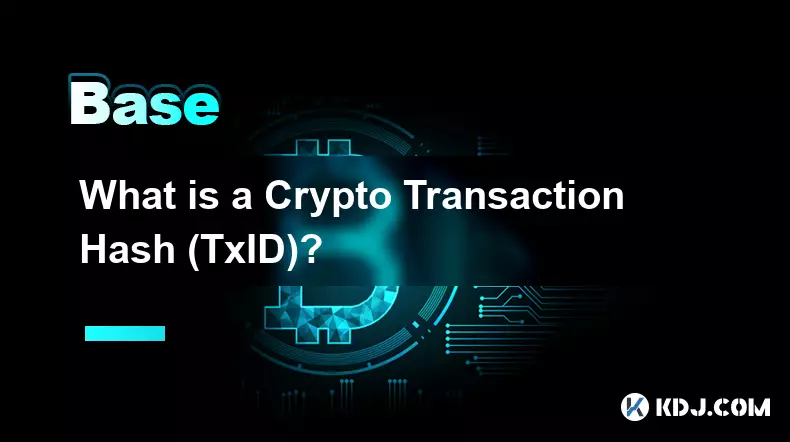
What is a Crypto Transaction Hash (TxID)?
Sep 07,2025 at 01:18pm
Understanding the Role of a Crypto Transaction Hash1. A crypto transaction hash, often referred to as TxID, is a unique identifier generated when a tr...
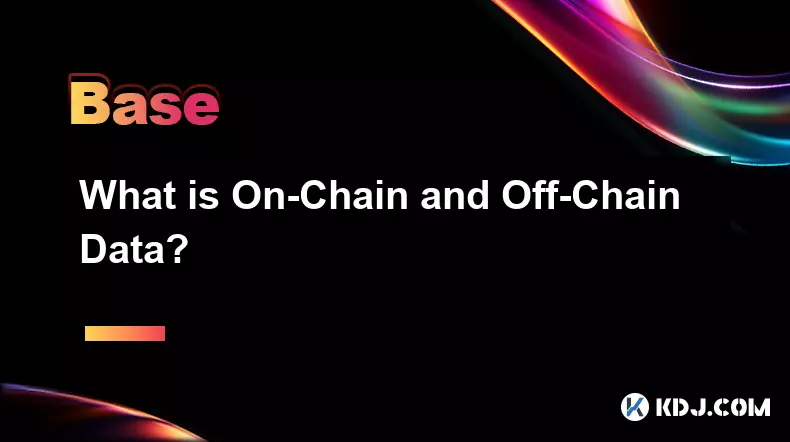
What is On-Chain and Off-Chain Data?
Sep 07,2025 at 04:55pm
Understanding On-Chain Data1. On-chain data refers to all information that is recorded directly on a blockchain. Every transaction, smart contract exe...
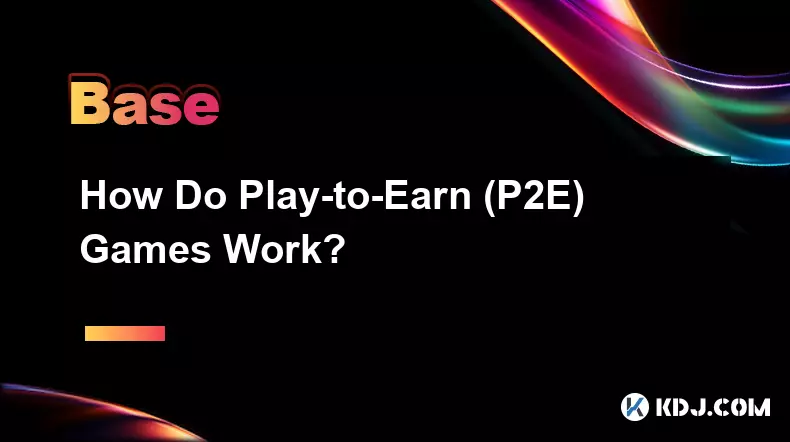
How Do Play-to-Earn (P2E) Games Work?
Sep 07,2025 at 10:54am
Understanding the Core Mechanics of Play-to-Earn Games1. Play-to-Earn (P2E) games operate on blockchain technology, allowing players to earn cryptocur...
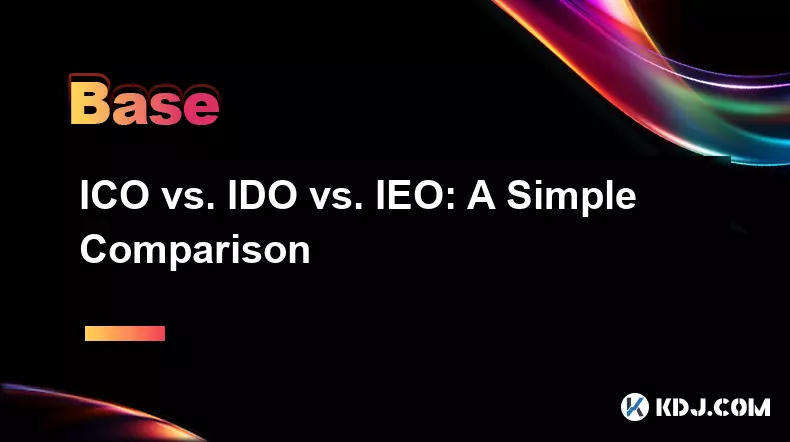
ICO vs. IDO vs. IEO: A Simple Comparison
Sep 07,2025 at 03:19pm
Understanding the Basics of Crypto Fundraising Models1. Initial Coin Offerings (ICOs) emerged as one of the earliest methods for blockchain projects t...
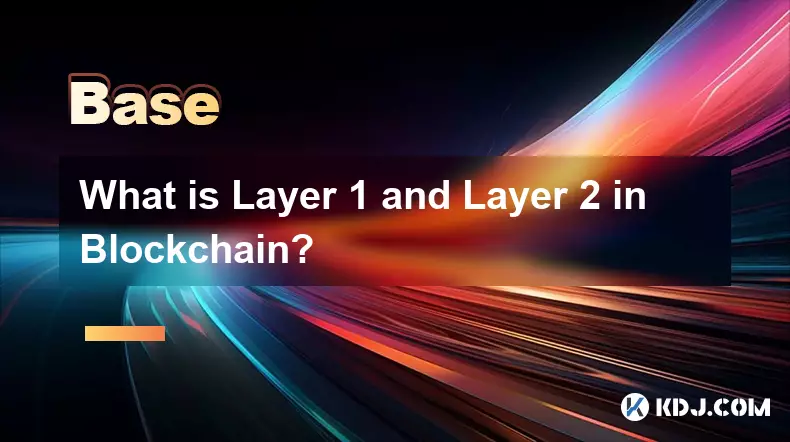
What is Layer 1 and Layer 2 in Blockchain?
Sep 06,2025 at 10:00pm
The Evolution of Decentralized Exchanges in the Crypto Ecosystem1. Decentralized exchanges (DEXs) have reshaped how traders interact with digital asse...
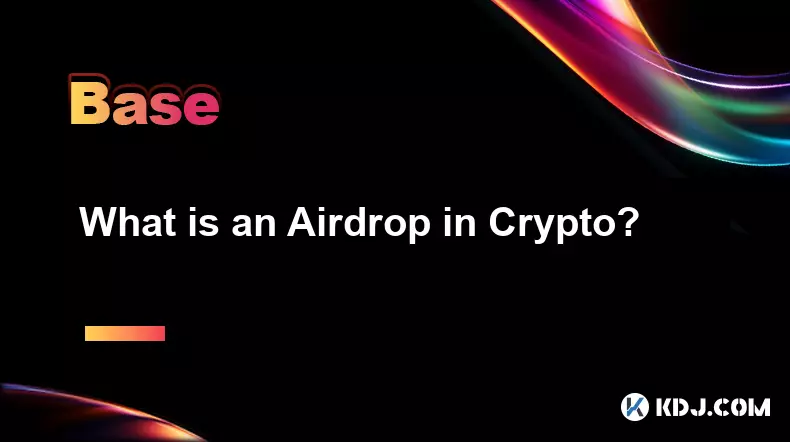
What is an Airdrop in Crypto?
Sep 07,2025 at 03:36am
What is a Crypto Airdrop?1. A crypto airdrop refers to the distribution of free tokens or coins to wallet addresses within the blockchain ecosystem. T...

What is a Crypto Transaction Hash (TxID)?
Sep 07,2025 at 01:18pm
Understanding the Role of a Crypto Transaction Hash1. A crypto transaction hash, often referred to as TxID, is a unique identifier generated when a tr...

What is On-Chain and Off-Chain Data?
Sep 07,2025 at 04:55pm
Understanding On-Chain Data1. On-chain data refers to all information that is recorded directly on a blockchain. Every transaction, smart contract exe...

How Do Play-to-Earn (P2E) Games Work?
Sep 07,2025 at 10:54am
Understanding the Core Mechanics of Play-to-Earn Games1. Play-to-Earn (P2E) games operate on blockchain technology, allowing players to earn cryptocur...

ICO vs. IDO vs. IEO: A Simple Comparison
Sep 07,2025 at 03:19pm
Understanding the Basics of Crypto Fundraising Models1. Initial Coin Offerings (ICOs) emerged as one of the earliest methods for blockchain projects t...

What is Layer 1 and Layer 2 in Blockchain?
Sep 06,2025 at 10:00pm
The Evolution of Decentralized Exchanges in the Crypto Ecosystem1. Decentralized exchanges (DEXs) have reshaped how traders interact with digital asse...

What is an Airdrop in Crypto?
Sep 07,2025 at 03:36am
What is a Crypto Airdrop?1. A crypto airdrop refers to the distribution of free tokens or coins to wallet addresses within the blockchain ecosystem. T...
See all articles





















![Daily Level for 9/7/2025: Momentum by EnenzoGD (WITH COIN) [GD Daily Video #809] Daily Level for 9/7/2025: Momentum by EnenzoGD (WITH COIN) [GD Daily Video #809]](/uploads/2025/09/07/cryptocurrencies-news/videos/daily-level-momentum-enenzogd-coin-gd-daily-video/68bcd9494f8d8_image_120_90.webp)


